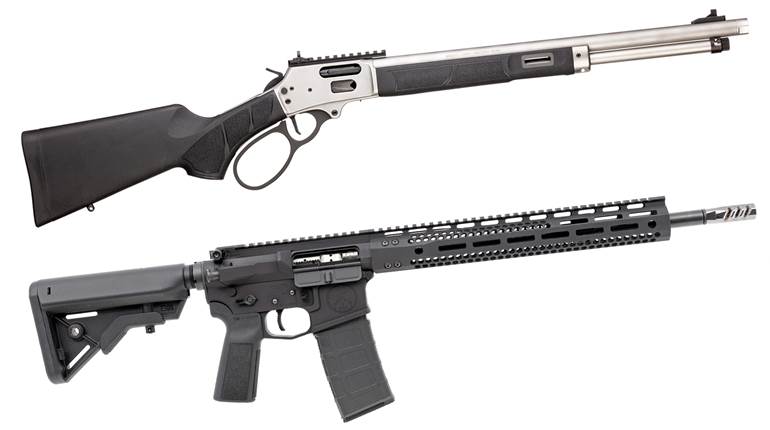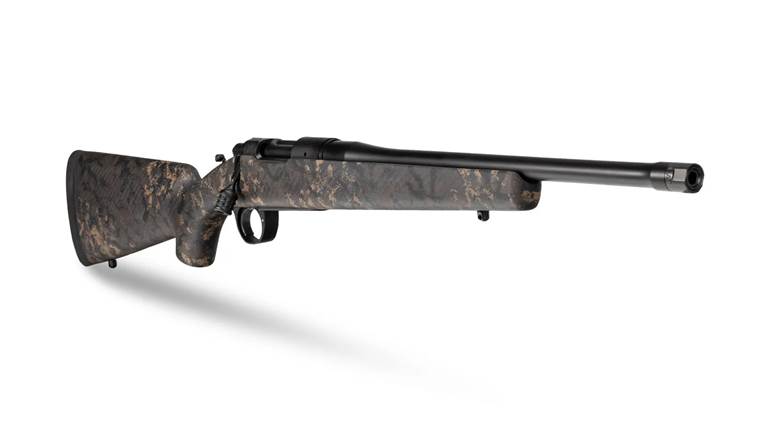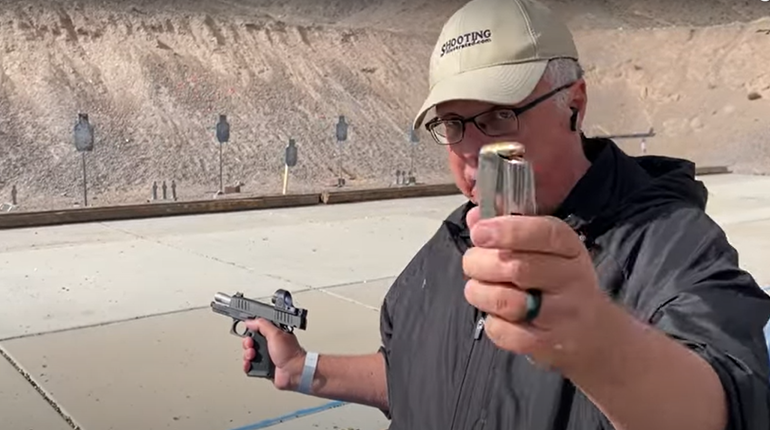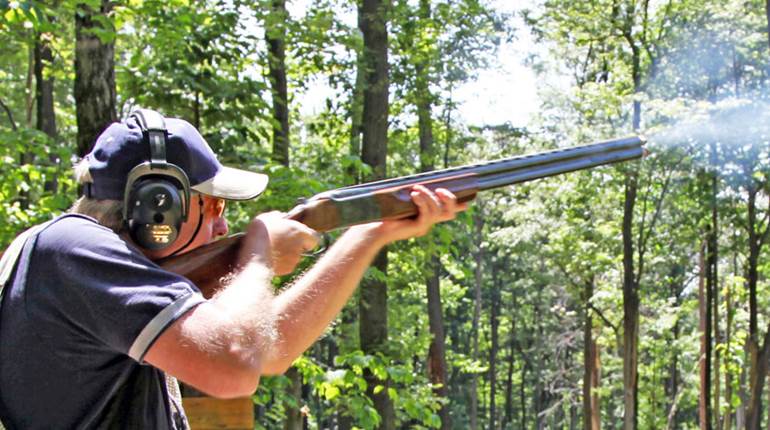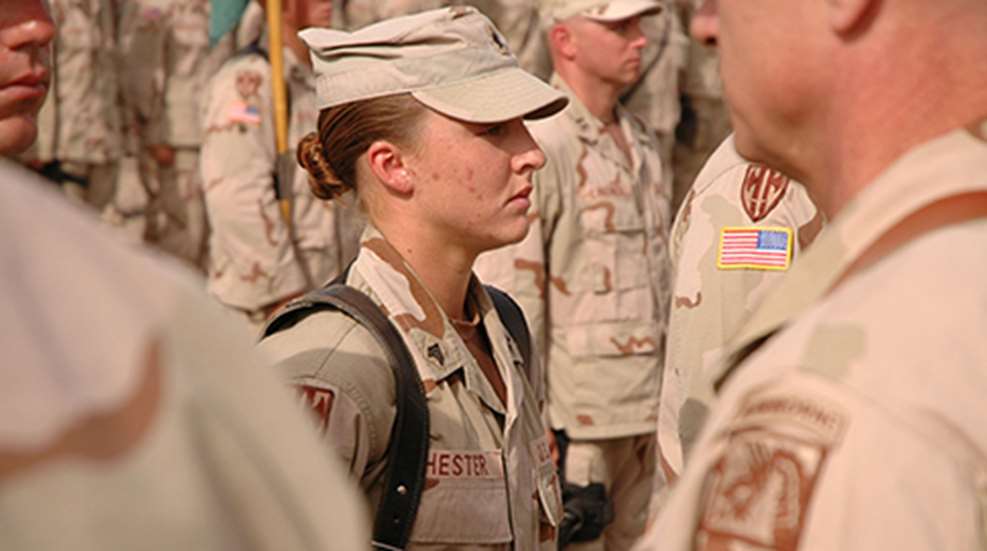
7/3/13
They were shadowing a half-mile long convoy of 30 civilian tractor-trailers that day, March 20, 2005, just south of Baghdad. They were from the 617th Military Police Company, Kentucky National Guard, assigned to the 503rd Military Police Battalion/18th Military Police Brigade from Fort Bragg and they were there in three Humvees serving as the security team for the other vehicles. Their call sign was Raven-42. As the arid scrubland near the town of Salman Pak slid past, the squad leader came on the radio to announce that the enemy had just attacked one of the vehicles ahead. With that report the Humvees sped up and rolled down the length of the convoy on the shoulder of the road to meet the threat. In doing so, they put their vehicles between the insurgents and the trucks making up the convoy, drawing the enemy’s fire off of the tractor-trailers. As Raven-42 swung into action, the gunners on each Humvee started laying down suppressing fire with an M2HB .50-caliber machine gun, a Mk. 19 40 mm grenade launcher, and an M249 Squad Automatic Weapon. The insurgents had taken up positions in a farmer's orchard next to the convoy’s route and were using a pair of dry irrigation ditches parallel to the road as an expedient trench line. From behind effective cover, they began directing fire at the MPs using Kalashnikov automatic rifles, belt-fed machine guns and rocket-propelled grenade launchers. Near a house at the back of the field, seven automobiles sat waiting with their engines running—obviously the enemy’s means of escaping the scene of the ambush.
The MPs quickly executed a right turn onto a perpendicular road that put their Humvees in a position to flank the attackers. Just as Raven-42 did this, an RPG round struck one of the Humvees, wounding the three soldiers inside. Simultaneously, ten insurgents moved forward across the field to a position within about 60 feet of the spot where the Americans had come to a halt. In the rear vehicle, Staff Sgt. Timothy Nein threw the passenger door open, dismounted and dashed toward a nearby berm as the enemy’s bullets sliced the air around him. 23-year-old Sgt. Leigh Ann Hester of Nashville, Tenn. followed. From the cover of the berm, the two soldiers then opened fire with their Colt M4s. In addition to the 5.56 mm bullets they directed toward the ambushers with their carbines, five-foot-four Sergeant Hester pumped out several 40 mm high explosive rounds from her M203 Grenade Launcher.
At this point in the firefight, it was all up to Nein and Hester. Three of their team members had been wounded early on and were therefore incapable of contributing to the battle. “We could not help them because we were still being fired upon by the insurgents,” Hester recalled. The other team members were either treating the wounded, or firing one of the mounted crew-served weapons. By virtue of these circumstances, Staff Sgt. Nein and Sgt. Hester had become the tip of the spear and they alone would have to take the fight to the enemy. Hester later described the battle in these terms: “The adrenaline was pumping, the bullets were flying, and I didn’t have any choice but to fight back.” Before deploying to Iraq, she managed a Shoe Carnival store in Nashville, but that Sunday afternoon outside of Salman Pak she was involved in the battle that would make her famous.
By that point in the firefight, the attackers had moved into the ditches and hidden behind several trees along the backside of the lot. The two MPs treating the wounded on the ground behind the rear Humvee then came under sniper fire as the skirmish continued to escalate. Both soldiers responded by firing AT-4 rockets toward the farmhouse where the sniper was hiding. With the fire of the .50-cal. machine gun and the SAW beginning to thump away at the enemy’s flank, Staff Sgt. Nein and Sgt. Hester laid down a continuous volume of fire at the 10 insurgents in the closest ditch. Although the Americans were fighting back, the situation had reached a stalemate. Despite the fact that they were up against a numerically superior, heavily armed enemy force, the MPs could not disengage. The lead Humvee was not going anywhere because of the RPG hit, and a withdrawal was definitely out of the question because of the wounded. Since their ammunition supply would run out long before a relief force could get to them, Staff Sergeant Nein and Sergeant Hester had only one real option: attack.
Hester then realized that her individual ammunition load-out was getting dangerously low—too low to push forward and mop up the ambushers. So she dashed back to one of the Humvees under fire and retrieved more magazines for her M4, additional 40 mm rounds for her M203, and a few M67 fragmentation hand grenades. Returning to the berm, she handed a few magazines and grenades to Staff Sgt. Nein, and the two rolled over the berm and spilled into the ditch to begin a final assault to finish the opposition off once and for all. The vehicle-mounted weapons forced the enemy to keep his head down while Nein and Hester pushed forward tossing grenades and firing their M4s. When one needed to do a magazine change, the other provided covering fire. Using this method, Nein and Hester swiftly leap-frogged down the length of the ditch and overwhelmed their opponents. Sgt. Hester killed three insurgents with her M4 Carbine and a fourth with a 40 mm HE round from her M203 grenade launcher. “It was either them or me—and I wasn’t going to choose the latter,” she later recalled.
At the end of the 30-minute long engagement, the battlefield was found littered with 24 dead and six wounded insurgents. One unwounded Iraqi was taken prisoner after apparently feigning injury in order to avoid the battle. In addition to that, the MPs collected an impressive haul of weapons and ammunition: 22 Kalashnikov rifles, six rocket-propelled grenade launchers, 16 rockets, 13 RPK-type light machine guns, three PKM belt-fed machine guns, 40 hand grenades, and a mountain of small arms ammunition—123 loaded AK magazines and 25,000 rounds of belted 7.62x54r for the PKMs. Clearly, this had been no lightweight insurgent ambush. Sgt. Hester and the other MPs also made a chilling discovery in the aftermath of the firefight when several of the insurgents were found to be in possession of handcuffs—a clear indication of their intention to take prisoners that day. But that never happened because the ambush of Raven-42 had not gone according to plan. Rather than stopping the convoy with automatic weapons fire and rocket-propelled grenades, most of the trucks rolled on toward their destination unscathed. Rather than taking prisoners to be used for internet propaganda, the insurgents captured no one. Rather than controlling the firefight, the insurgents were dominated by a well-lead and disciplined squad of U.S. Army soldiers that included two women.
Throughout the Global War on Terror, they have served the United States military conspicuously and, in many cases, courageously. They fly, they drive, they care for the wounded, they police, and they fight. Their role in the military has changed a great deal during the last century of U.S. military history. From the limiting, gender-specific roles of the World Wars, through the evolving attitudes of the Vietnam era, women have seen barriers lifted to such an extent that they now serve in units that can expect to come under enemy fire. In the ranks of the Army’s Military Police Corps, Leigh Ann Hester’s service provided a rare opportunity for a woman to experience direct combat with the enemy. In a 2005 interview, she described the uniqueness of those circumstances herself:
There’s no difference in gender here in the MP Corps—we’re all doing each other’s jobs—the same jobs—there’s no difference. We have female squad leaders, female team leaders, female gunners, female drivers—it’s all the same job. We’re all soldiers in the United States Army.
Although she is certainly not alone in having experienced combat, Leigh Ann Hester is alone in one important distinction. In a ceremony at Camp Liberty near Baghdad on June 16, 2005, she was awarded the Silver Star in recognition for the way she fought that day near Salman Pak. This was the first time since World War II that the Silver Star was awarded to a woman and it is the only time an American woman has received that particular decoration for direct combat action with the enemy. The significance of this award was definitely not lost on her either, because after receiving it Hester said, “It’s an honor just to be considered for the Silver Star because it’s a very prestigious award and not too many soldiers receive it.” But when thrust in front of the cameras afterward, Hester deflected questions that were directed at her as an individual. Instead of talking about herself, despite having every good reason to do so, the only satisfaction that she would express was that everyone in her squad survived the battle: “Mainly, I’m just glad that we’re all here to talk about it.” But the memories of March 20, 2005 are still with her:
I think about it every day—the actions and the play-by-play of how it happened. The pictures that are stuck in my mind about what I saw that day. My fellow soldiers lying there bleeding, and me trying to give them aid and get them to the hospital— medevac’ed out on a helicopter.
Although 2005 was firmly situated in an era that seemed at times heavily characterized by shallow self-absorption and narcissism, Sgt. Hester the shoe-store-manager-turned-decorated-war-hero still thought of herself as being a member of a team. Her devotion to duty and devotion to comrades might make you recall the closing line of the 1954 feature film The Bridges at Toko-Ri. In that line, Rear-Admiral George Tarrant (played by Fredric March) has just been informed of the loss of Lt. Harry Brubaker (played by William Holden) and he asks, "Where do we get such men?" The example of Leigh Ann Hester might inspire a modernized version of that quote: “where do we get such women?”












